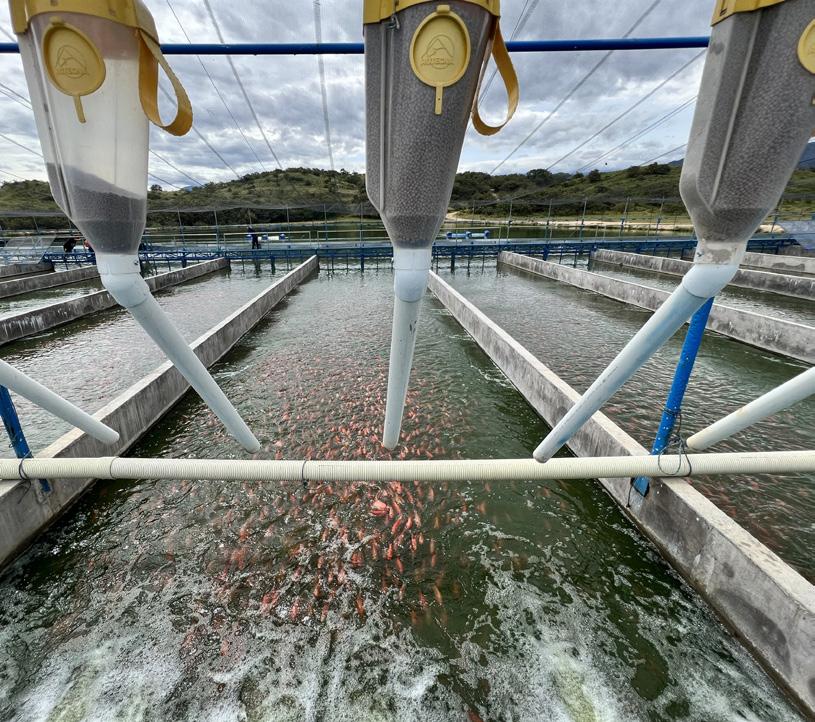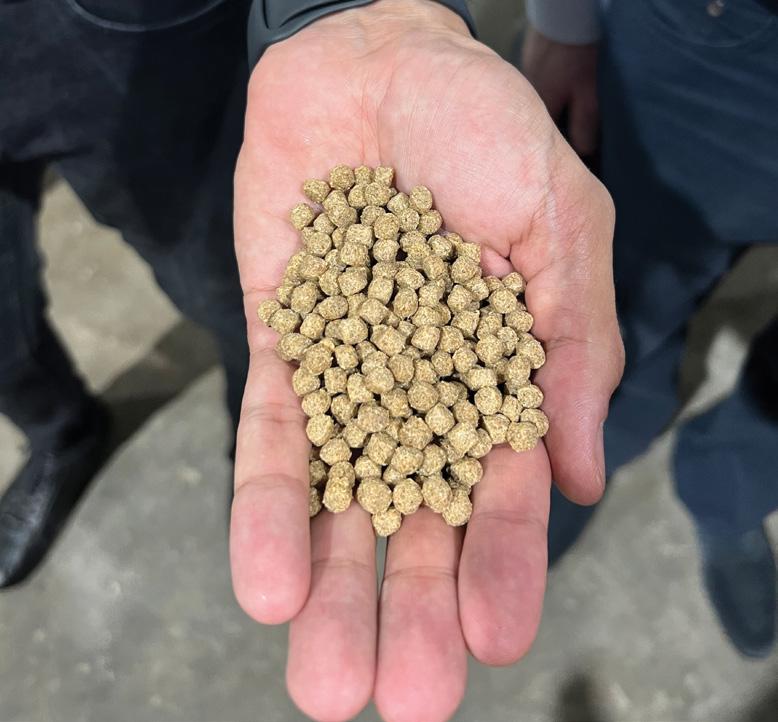
5 minute read
Fishing for Success
Nuffield Scholar Hopes to Replicate Global Aquaculture Success in U.S.
By Jeff Hutton, jhutton@iasoybeans.com
From the Land Down Under to South American ports, from the Middle East to our Canadian neighbors, Easton Kuboushek has trekked thousands of miles in the last several months. He has met farmers and agriculture leaders around the globe, gaining more insights into aquaculture, an area of particular interest to him and many soybean farmers.
Kuboushek, the executive director of the Soy Aquaculture Alliance (SAA), is one of 10 Nuffield International Farmer Scholars for 2023. His scholarship has allowed him to travel on behalf of Iowa farmers and U.S. aquaculture where he is exploring the success stories, best practices and technology that have created huge growth in aquaculture production globally.

Changing the narrative
Sponsored in part by the Iowa Soybean Association, the Nuffield Scholarship allows Kuboushek to study global aquaculture, covering 14 weeks of travel across five continents and more than a dozen countries.
“It’s been profound seeing the differences in agriculture around the world,” says Kuboushek, who grew up milking cows on the family’s farm near Spillville. “What’s most surprising is the commonality: every farmer is facing challenges related to profitability, labor and sustainability. If you were to compare a farmer in Iowa to a farmer in Australia, you’d find they share more in common than not.”

The embrace of aquaculture in other parts of the world has been eye-opening, Kuboushek says. Farmers and advocates in other locales are serious about sustainable seafood farming with hopes of reducing poverty, reducing hunger, providing more economic opportunities, and helping others by recognizing aquaculture as a sustainable farm practice.
Kuboushek hopes to incorporate those concepts into how SAA approaches its work and research, while also trying to sway more American farmers, businesses, investors and politicians toward this form of agriculture.
He acknowledges the journey toward American acceptance of aquaculture continues to be long and treacherous.
“It boils down to regulations,” he says. “The permitting and inconsistent regulatory structure is so expensive and challenging to navigate. It’s a barrier to new producers getting off the ground and for existing producers to grow.”
Other countries, he’s learned, have far fewer regulations, and often provide incentives for farmers to get started.

Because the United States has the “luxury” of having an ample food supply and enjoys the strongest economy in the world, Kuboushek says some are more focused on social and environmental issues, that, in some cases, are providing “false barriers to the growth” of aquaculture.
“There are a lot of opportunities in offshore aquaculture, for example, but certain groups are putting up those barriers because they don’t want to see any form of fishing or because they are opposed to consuming any animal protein, including fish and other seafood,” he says.
“Adversaries have argued that aquaculture will have a negative impact on the environment and that these sites are an eyesore, even though they are often miles offshore,” he says.
This has created a false narrative, despite evidence that shows aquaculture is much more sustainable than traditional fishing.

Rewarding opportunity
As a Nuffield scholar, Kuboushek says the trip “has been more affirming in the opportunity for aquaculture than I had anticipated.”
Trips to Egypt and South America showcased the value aquaculture can have for farmers, business owners, investors, suppliers and consumers.
Thanks to aquaculture, Egypt has dramatically increased its farm-raised fish production — from 600,000 metric tons in 2005, to nearly 1.5 million metric tons (mmt) in 2019. Production is expected to surpass 2 mmt by 2030.
That means more need for fish food, which in turn means more demand for soybeans.

“There’s no reason why the United States can’t adopt these aquaculture practices,” Kuboushek says, noting the opportunity to connect with aquaculture enthusiasts throughout the supply chain during his Nuffield experience.
For Kuboushek, being a Nuffield scholar has been life changing.
“The most valuable part for me are the connections I’ve made around the world,” he says, pointing to the hundreds of Nuffield alumni and their contacts.
“I had underestimated having those friends with mutual interests scattered around the globe,” Kuboushek says. “I can apply that knowledge to the work I’m doing with SAA, the Iowa Soybean Association or even my personal life.”
Kuboushek will wrap up his Nuffield experience with a trip to Southeast Asia, slated for next spring. After that, he will submit a final report.
He notes, however, that the experiences and opportunities will linger throughout his lifetime.
These will help him guide farmers and others to understand how far reaching the soybean can be. It’s also about how significant Iowa and other soybean-producing states can be in the development of the aquaculture market, providing sustainable and environmentally-sound food for the world.
“I really want Iowa farmers to understand the global perspective of their business,” he says. “It’s so interesting the beans they grow in Iowa are reaching this unique market of aquaculture.”









